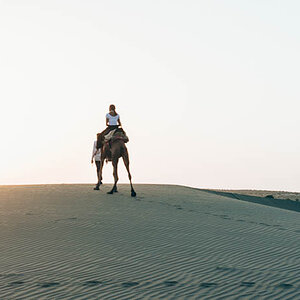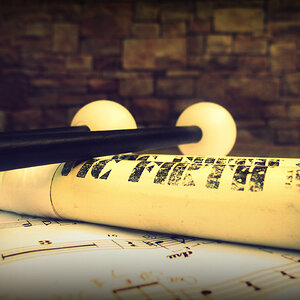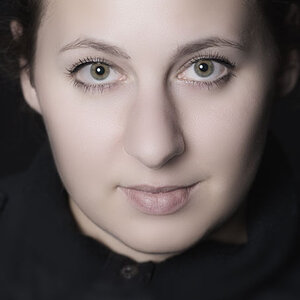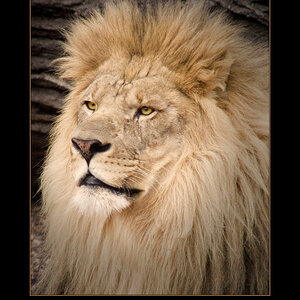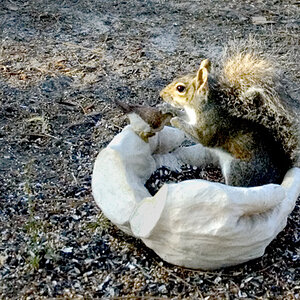Navigation
Install the app
How to install the app on iOS
Follow along with the video below to see how to install our site as a web app on your home screen.

Note: This feature currently requires accessing the site using the built-in Safari browser.
More options
You are using an out of date browser. It may not display this or other websites correctly.
You should upgrade or use an alternative browser.
You should upgrade or use an alternative browser.
Manual... where to start?
- Thread starter dab_20
- Start date
I
Iron Flatline
Guest
You might want to sneak there. Think about starting with something like Aperture Priority of Shutter Priority mode (Av and Tv respectively on your dial - I assume) to get a better feel.
So let's say you use Tv (Shutter Priority - Tv means Time value) and you set it 1/125th of a second - you will notice that your aperture changes. Outside in the sun it becomes quite small (f/16 or f/22) but inside it opens wide up to let more light in (f/4 or even f/2.8 if your lens can open that far).
Conversely, you can shoot using Av (Aperture priority) which means you'll set the lens aperture to a fixed opening width. Let' say you set it to f/4, you will find that inside a well-lit building you're getting normal shutter speeds, like 1/60th of a second. But outside in bright sunlight the camera wants to shoot at 1/500th of a second.
As you get more comfortable with these settings, and understand how they might affect your image, you can increasingly just swith to full manual.
Sometimes I use the camera's internal light meter to tell me whether I'm ok based on a certain setting. I'll be shooting Av mode, and want to get a great depth of field - I want everything in focus at a family dinner. So I'll set the camera to f/8 and see how my light meter is setting my shutter speed. But it's cloudy, and everything is sorta lit the same, and I see that most of my shots are between 1/60th and 1/125th of a second. I'll switch to manual, keep my aperture at f/8, set my shutter speed to 1/90th of a second, and then stop worrying about it. It allows me to just compose pictures.
There's a little more to it that that - next (but less extreme) is the ISO setting, you may (or may not) be able to use that to compensate, as well as Ev - exposure compensation.
Finally, you will want to know your medium - how forgiving is the film that you're using, or in your case how good is the Evolt's sensor at pulling out details from a slightly under-exposed shot. My understanding is that it's actually pretty good, so your margin of error is wider - always nice to know.
So let's say you use Tv (Shutter Priority - Tv means Time value) and you set it 1/125th of a second - you will notice that your aperture changes. Outside in the sun it becomes quite small (f/16 or f/22) but inside it opens wide up to let more light in (f/4 or even f/2.8 if your lens can open that far).
Conversely, you can shoot using Av (Aperture priority) which means you'll set the lens aperture to a fixed opening width. Let' say you set it to f/4, you will find that inside a well-lit building you're getting normal shutter speeds, like 1/60th of a second. But outside in bright sunlight the camera wants to shoot at 1/500th of a second.
As you get more comfortable with these settings, and understand how they might affect your image, you can increasingly just swith to full manual.
Sometimes I use the camera's internal light meter to tell me whether I'm ok based on a certain setting. I'll be shooting Av mode, and want to get a great depth of field - I want everything in focus at a family dinner. So I'll set the camera to f/8 and see how my light meter is setting my shutter speed. But it's cloudy, and everything is sorta lit the same, and I see that most of my shots are between 1/60th and 1/125th of a second. I'll switch to manual, keep my aperture at f/8, set my shutter speed to 1/90th of a second, and then stop worrying about it. It allows me to just compose pictures.
There's a little more to it that that - next (but less extreme) is the ISO setting, you may (or may not) be able to use that to compensate, as well as Ev - exposure compensation.
Finally, you will want to know your medium - how forgiving is the film that you're using, or in your case how good is the Evolt's sensor at pulling out details from a slightly under-exposed shot. My understanding is that it's actually pretty good, so your margin of error is wider - always nice to know.
Peniole
TPF Noob!
- Joined
- Apr 11, 2007
- Messages
- 516
- Reaction score
- 1
- Location
- where to next?
- Can others edit my Photos
- Photos NOT OK to edit
Iron flatline basically gave you what you need, just one thing to add since I use the same camera. Now depending on your settings, in manual mode moving the dial alone will change the shutter speed and holding down the EV button and moving the dial changes you aperature. Inside the viewfinder you'll notice a scale you don't see in any of the other modes, it just tells you with the combination of shutter speed and aperature how close you are to the right exposure (metered of course by the camera depending on your metering setting), you may or may not wish to follow that exactly since in manual mode you really decide where on the exposure spectrum you think this image should be.
And yes the E-500 is pretty good at pulling out detail from darker scenes. Also I would definitely use the provided hoods especially in brighter scenes and especially on the wide angle lens unless you're at the really wide end of 14mm.
And yes the E-500 is pretty good at pulling out detail from darker scenes. Also I would definitely use the provided hoods especially in brighter scenes and especially on the wide angle lens unless you're at the really wide end of 14mm.
mwct
TPF Noob!
- Joined
- Jul 1, 2007
- Messages
- 46
- Reaction score
- 0
- Location
- USA
- Website
- www.flickr.com
- Can others edit my Photos
- Photos NOT OK to edit
Its not so different from AV or TV mode... but you have to set both aperture and shutter speed instead of just one. Set the aperture first then adjust shutter or vice versa. That's really all there is to it. Oh and you are going to have to focus the lens yourself by turning the focus ring.
EOS_JD
TPF Noob!
- Joined
- Feb 15, 2007
- Messages
- 1,698
- Reaction score
- 0
- Can others edit my Photos
- Photos OK to edit
Start by reading "Understanding Exposure" by Bryan Petersen. It will open up the world of exposure and help you understand how to use your camera. A must buy..... It helped me greatly. Read page 14 and it will describe how to take a manual exposure.... Really very easy and there's no great secret to it. Once you learn what to expose for it's sometimes easier to use manual than Av or Tv. Manual mode is very useful for times when you need consistency in your images and the light doesn't change too much.
Richard
TPF Noob!
- Joined
- Feb 23, 2007
- Messages
- 269
- Reaction score
- 0
- Location
- North Carolina, USA
- Website
- www.raeelle.com
- Can others edit my Photos
- Photos NOT OK to edit
Start by reading "Understanding Exposure" by Bryan Petersen.
I agree, I just bought that book about a month ago and it is great. My pictures have improved, now I just have to find the next best book.
ksmattfish
Now 100% DC - not as cool as I once was, but still
- Joined
- Aug 25, 2003
- Messages
- 7,019
- Reaction score
- 36
- Location
- Lawrence, KS
- Website
- www.henrypeach.com
- Can others edit my Photos
- Photos NOT OK to edit
The key is in understanding what your meter is telling you, and what it is measuring. With the meter zeroed out it's telling you the proper exposure to get middle gray. That's great if you are shooting a gray elephant, but it also tells you how to make a white swan gray and a black dog gray. If metering a dark subject, you may want to underexpose a bit from the meter's suggestion. If metering a light subject, you may want to overexpose a bit. Read your camera manual to understand the meter's modes (what parts of the scene it is metering).
dab_20
TPF Noob!
- Joined
- Feb 19, 2007
- Messages
- 572
- Reaction score
- 5
- Location
- Utah
- Can others edit my Photos
- Photos OK to edit
Thanks for the advice everyone. I tried out manual for the first time today. Here's some pictures I took with the settings. I realize they're kind of blurry and underexposed, but I'm pretty proud of myself! If you have any advice on how to change my settings or whatever, they're welcome!
My mom
1/15 F6.3-2.3 ISO100

Me
1/1.6 F5.6-2.3 ISO100
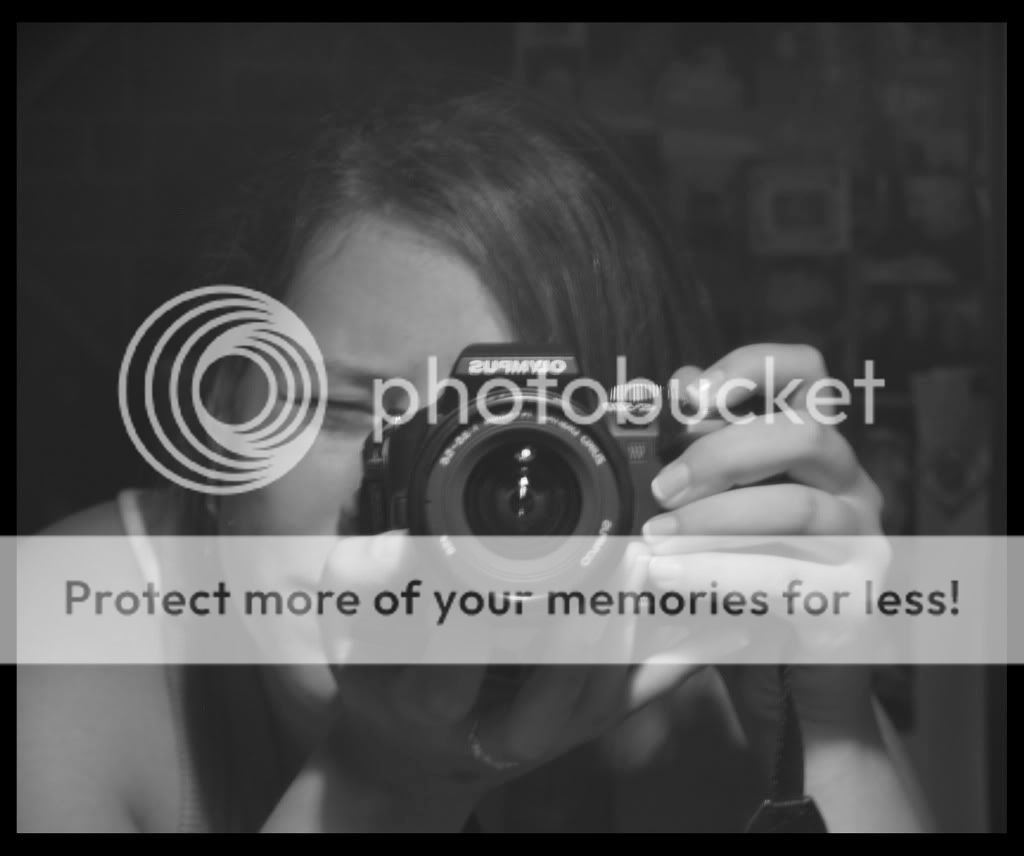
My mom
1/15 F6.3-2.3 ISO100

Me
1/1.6 F5.6-2.3 ISO100

ANDS!
No longer a newbie, moving up!
- Joined
- Nov 14, 2006
- Messages
- 2,178
- Reaction score
- 3
- Location
- Downtown
- Can others edit my Photos
- Photos OK to edit
Whats that F5.6-2.3 and F6.3-2.3?
Yea the last one is OOF - if it indeed was 1/1.6 of a second, thats pretty slow. . .not ideal for a hand held shot.
Quick edit of the first picture -

Yea the last one is OOF - if it indeed was 1/1.6 of a second, thats pretty slow. . .not ideal for a hand held shot.
Quick edit of the first picture -

EOS_JD
TPF Noob!
- Joined
- Feb 15, 2007
- Messages
- 1,698
- Reaction score
- 0
- Can others edit my Photos
- Photos OK to edit
Firstly, make sure you are shooting with a fast enough shutter speed to avoid camera shake. Raise your ISO to get an appropriate shutter speed if your aperture is not wide enough to give the shutter speed you need.
Your first image is nice although just a bit under exposed. Easy to fix in photoshop.
Your second really lacks a lot of contrast. Lighting looks poor and shutter speed is obviously a little too slow.
When shooting manual, there's a small bar in the viewfinder and a small icon moves left/right as you decrease/increase exposure. As a general rule a correct exposure is when the bar is in the middle however shooting certain subjects may mean you need to add or decrease the given exposure.
This is where learning comes in and you have started that long journey
Your first image is nice although just a bit under exposed. Easy to fix in photoshop.
Your second really lacks a lot of contrast. Lighting looks poor and shutter speed is obviously a little too slow.
When shooting manual, there's a small bar in the viewfinder and a small icon moves left/right as you decrease/increase exposure. As a general rule a correct exposure is when the bar is in the middle however shooting certain subjects may mean you need to add or decrease the given exposure.
This is where learning comes in and you have started that long journey
maddermaxx
TPF Noob!
- Joined
- Jun 26, 2007
- Messages
- 72
- Reaction score
- 0
- Can others edit my Photos
- Photos OK to edit
White balance is off.
I don't know how to change it on your camera but check the settings.
I don't know how to change it on your camera but check the settings.
pietpetoors
TPF Noob!
- Joined
- Jul 19, 2007
- Messages
- 1
- Reaction score
- 0
- Location
- Langebaan South Africa
- Can others edit my Photos
- Photos NOT OK to edit
Hi Dab_20, PM me your email address then I will email you an ebook which I wrote for manual cameras some years ago. I will send it to you free fo charge. If you understand the basic of the manual camera you will understand better what happens when taking a picture.
Similar threads
- Replies
- 6
- Views
- 636
- Replies
- 4
- Views
- 518
- Replies
- 11
- Views
- 623

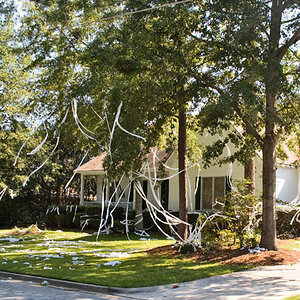

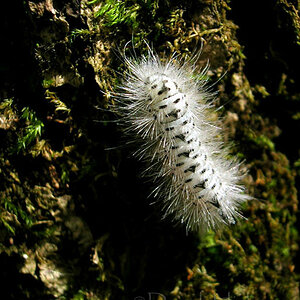
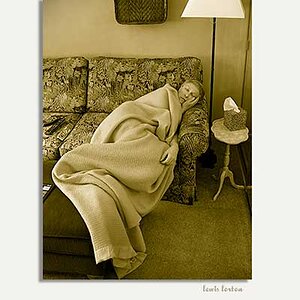
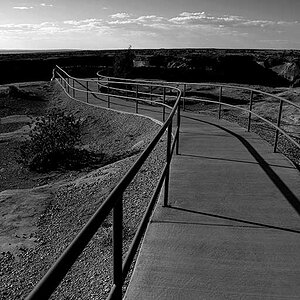
![[No title]](/data/xfmg/thumbnail/37/37493-07470d1244285a42bb716c7df65abfda.jpg?1619738112)
